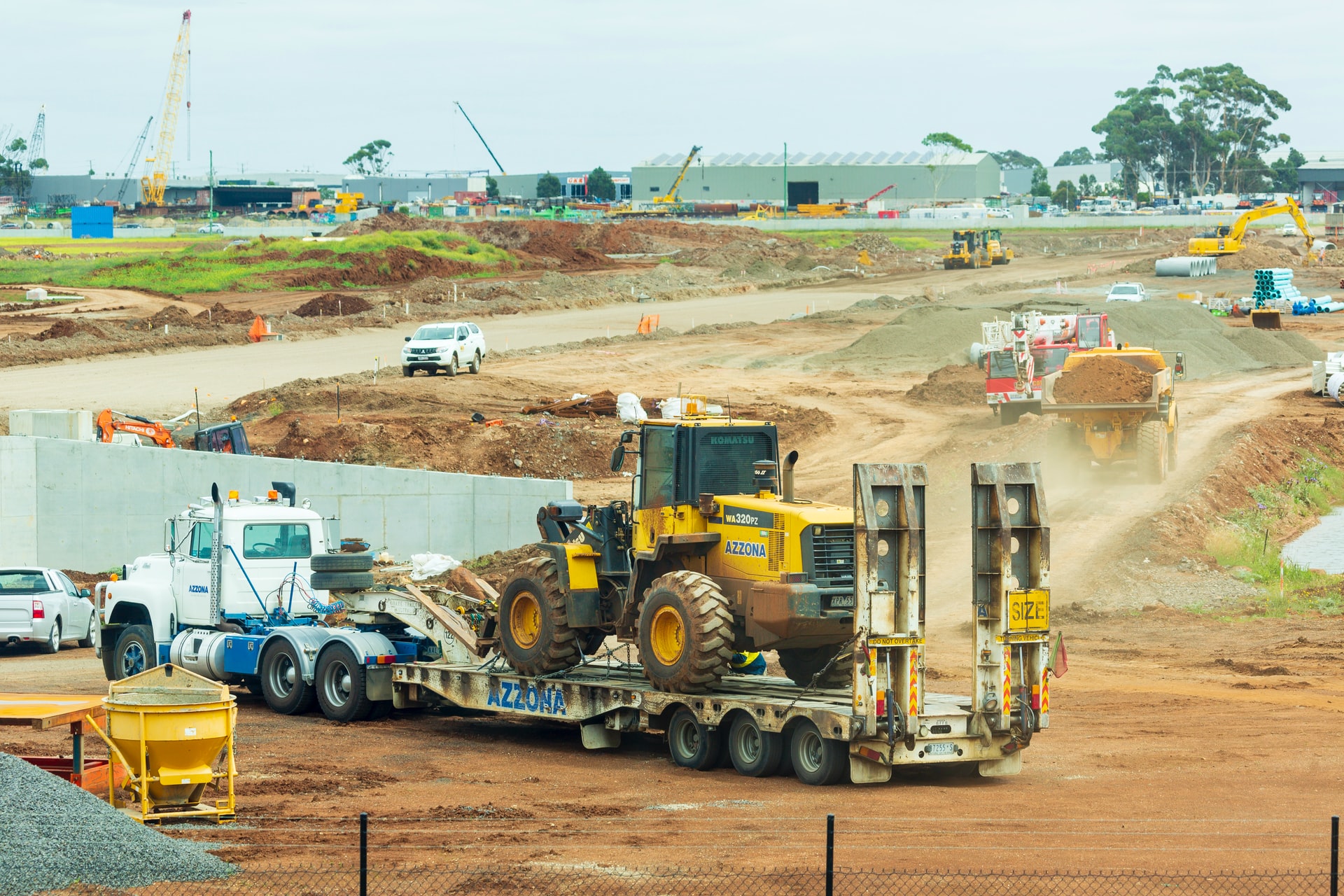You could have a competitive advantage if you’re in the construction industry and have high-quality equipment readily available to complete jobs. However, acquiring the right equipment could strain your company’s finances and lead to serious cash flow issues.
The price tag of the equipment you need can stand as a significant hurdle between you and your organization’s full potential. Fortunately, you can turn to construction equipment financing to secure the assets you need to land lucrative contracts and grow your firm without compromising its financial health.
Read on to learn more about construction equipment financing, key benefits, drawbacks, and, most importantly, how to find the perfect loan for your construction business.
How Construction and Heavy Equipment Financing Works
As the name implies, construction equipment financing refers to loan products used for securing used or new equipment.
Loan amounts range from $10,000 to well over $5 million, and you’ll typically have between 1 and 5 years to repay what you borrow. In most cases, the loan amount will be the cost of the equipment you’re seeking to purchase, and you can use the equipment itself as collateral to secure the financing. If you default on your payments, the lender can seize the asset to recoup their losses.
Your specific interest rate will depend on a variety of factors, including the amount you want to borrow, your creditworthiness, how long you’ve been in business, and the lender you’re dealing with. The most competitive rates are reserved for business owners who can boast strong financials and credit scores, but you can still secure the funds you need without these qualifications. Additionally, some lenders offer discounted rates to customers who make a down payment at the start of their heavy equipment loan, which can lower your interest rate further.
How Construction and Heavy Equipment Financing Can Help Business Growth
Tapping into several financing options can lead to business growth. These are some of the perks of accessing additional capital.
Access to Up-to-date Equipment
Heavy machinery endures wear and tear that eventually warrants a replacement. However, not every business has enough cash available to buy new equipment. Small business lenders have several solutions that can fill in the money gap. Construction companies can get new equipment that makes it easier to fulfill their services.
Enhanced Competitive Edge
Accessing additional capital from banks and other loan providers can help construction companies gain market share and take on more clients. Your construction company can become the leader of the local area because of the extra capital.
Scalability and Expansion
Every business needs workers, but not every business has money ready to give out. Working capital loans and lines of credit make it easier to hire contractors. Bringing on more contractors and paying your current workers well can make you more ambitious. You can work on more projects at the same time and expand beyond your local community.
Increasing Operational Efficiency
A financial institution can give you the necessary funds to make important transactions, such as purchases of equipment and materials. Delaying these purchases can hurt operational efficiency, but not every small business owner has enough personal savings to make crucial purchases. Submitting a loan application to several banks can result in better loan offers and let you access the capital you need to become more efficient.
Cash Flow Management
Construction companies go through ebbs and flows, but through it all, they must maintain day-to-day operations. That’s easier said than done when revenue dries up, but you can use a small business loan to hold up your company in the meantime. Business owners can find great deals if they reach out to several lenders. You can also end up with low monthly payments if you stretch out your loan’s term.
What You Can Use Construction and Heavy Equipment Financing For
Construction equipment financing can be used to secure any type of construction equipment, but it’s more commonly used to acquire the following pieces of equipment:
- Backhoe
- Bobcat
- Bulldozer
- Dragline excavator
- Excavator
- Grader
- Loader
- Paver
- Tower crane
- Trailer
- Trencher
- Truck
- Wheel tractor scraper
Common Types of Construction and Heavy Equipment Financing
These are some of the most popular financial services and products for business owners who are seeking financing.
Lines of Credit
A line of credit is extra reserves you can use at any time. You only pay interest when you borrow against the credit limit, and these financial products start with low monthly payments. The remaining balance on your line of credit converts into a traditional loan after the draw period concludes. Lines of credit have variable interest rates.
Leasing
This is a good option for business owners who have tight budgets and don’t have enough funds to make a down payment. It’s also useful for startups that want to keep monthly costs low and not overcommit to their ideas just yet.
Leasing is the equivalent of renting. You make monthly payments but never build equity or own the equipment. You can temporarily save money on expensive equipment with a lease, but it’s better to buy equipment in the long term.
Equipment Loans
These loans may require a down payment but let you own large machines after you pay off the loan. You’re not stuck with monthly payments forever; most equipment loans have 3 to 10-year terms.
Lenders will take a careful look at your revenue, credit score, years of experience, and other factors before determining your rate and terms. It’s possible to receive a lower rate if you have good credit. However, you must fulfill the lender’s eligibility requirements to get a loan. Business owners can reach out to multiple lenders and compare offers to decide which one is right for them.
Equipment Leasing vs. Equipment Financing
Both equipment financing and equipment leasing allow you to afford the assets you need without paying out-of-pocket, but each option has unique characteristics that set them apart. With equipment leasing, you agree to make consistent payments over a set period, and at the end of the term, you decide whether to purchase the equipment outright or return it to the lender. This decision will be different depending on your specific circumstances/business needs.
Equipment financing is the same sort of process, but you get to keep the asset at the end of the term. Think of it this way: You’re paying to use the asset through a lease, whereas you’re paying to own the asset through financing.
Consider the benefits and drawbacks of equipment leasing and financing to determine which option is right for you.
Equipment Leasing Pros and Cons
Pros:
- Less stringent eligibility requirements
- Fixed monthly payment for a set period (i.e., 2 to 5 years)
Cons:
- Equipment reverts to the lender at the end of the agreement unless you enter into a new lease agreement or purchase it
Equipment Financing Pros and Cons
Pros:
- More affordable monthly payment
- Equipment is yours to keep when the loan is paid off
Cons:
- Some construction equipment loans have variable interest rates with monthly payments that increase over time
- Equipment could be outdated or need costly repairs over time, which isn’t covered by your financing
Equipment Financing vs. Equipment Leasing: Which is Better for You?
It would depend on several factors, including the type of equipment, the amount of time you plan to use it, how much it’ll cost to maintain, and the resale value. For example, a lease is ideal if the equipment could become obsolete in the near future or your company is crunched for cash. But, if the equipment will be in use for some time and you’re looking to sell it at some point, equipment financing could be the better option.
How to Qualify for Equipment Financing
The qualification criteria for equipment financing varies by lender, but most evaluate your company’s cash flow, annual earnings, credit rating, and the amount of time you’ve been in business.
You could be eligible if you meet these general guidelines:
- Been in business for at least one year
- Earn at least $120,000 in annual revenue
- Have a personal credit score of 650 or higher
If you don’t quite meet these guidelines, you could still be in luck. Some lenders will approve you for equipment financing if you’ve been in business for some time and have a credit score of 620 or higher. Others don’t have a minimum credit score requirement if you meet a certain income threshold and have at least six months of business experience, so it’s best to shop around before making a final decision.
Keep in mind that the lender you select could have more or less stringent thresholds for credit approval to determine if you qualify for funding. Ultimately, lenders want to be reassured that your company has the means to repay what you borrow on time.
If you’re having trouble reaching approval for construction equipment financing, it’s worthwhile to consider proactively strengthening your credit score. Start by focusing on paying down your revolving debt balance to give your credit utilization rate – getting this percentage to 30 percent or lower is ideal. You should also pay off any past-due accounts to avoid adverse credit reporting and ensure that you’re making timely payments on all outstanding debt obligations whenever possible.
How to Get Construction and Heavy Equipment Financing
If you are considering financing, you can follow these steps to get enough capital from a lender.
Assessment of Business Needs
Small business owners should determine how extra capital can help before applying for a loan. This extra analysis can ensure that you do not ask for too much capital or end up short. While not asking for enough capital will result in another loan application, asking for too much money will result in higher fees. The lending business model charges fees equal to a percentage of the loan’s total amount.
Understanding the Terms
Loans offer lump sum payments, but you also have to repay the loan over time. Taking a look at your budget will give you a better understanding of how much you can afford for the monthly payment. When you do that, you can approach a lender and know what terms you need for the loan.
Comparing Loans and Financial Institutions
You shouldn’t do business with the first lender who gives you an offer. It’s not even a good idea to work with your current lender. Comparing different loans and financial institutions will help you get a better rate.
Sometimes, it makes sense to do business with the same lender, but you won’t know for sure unless you apply for multiple loans at various institutions. Some lending marketplaces make the entire process straightforward and send your application to dozens of partners.
Conclusion: How to Select the Right Construction and Heavy Equipment Financing Option
Choosing the right financing option can free up cash flow and give your company state-of-the-art equipment. Most business owners do not have enough personal savings to support and grow their companies, but that’s where lenders can help. Comparing rates and terms from various financial products and loan providers will increase the likelihood of making the right decision.
FAQs About Construction and Heavy Equipment Financing
Generally, you’ll need at least one year of experience in business, a 650 credit score, and annual earnings of 120,000 or more. However, you could be eligible for a loan with a credit score as low as 620 if you have been in business for some time.
In most cases, it’s cheaper to purchase construction equipment. But opting for a heavy equipment lease could be easier to qualify vs. getting financing.
If you decide to finance your equipment purchase, keep the loan terms in mind. Heavy equipment financing with a fixed interest rate means you’ll get a predictable monthly payment. A variable rate could make your monthly payment fluctuate. You will want to decide if increased payments would create any cash flow issues for your company’s finances and be prepared for the added expense.
On average, the interest rate on equipment leases is 6 to 15 percent. However, several factors play a role in your interest rate, and a lower credit score means you’ll likely get a higher interest rate.







